Intuitive painting: Connecting with yourself
- polinayakymenkocon
- Aug 30, 2023
- 6 min read
Updated: Jan 16, 2024
The more we become our flow, the happier we become, the easier it becomes for us to live everyday life and overcome adversities, the easier it becomes to succeed in what we choose to do, and the more fulfilled we become. - Giora Carmi
Back in 2020, I became intrigued by the intuitive painting process. I practiced intuitive painting as a personal ritual for self-expression and relief. However, I struggled to find resources solely focused on explaining the intuitive painting process.
One day, while browsing online, I came across a book titled "Opening Intuitive Flow Through Artwork" by Giora Carmi. I read it in one sitting and was amazed at how he explained intuition and intuitive flow using simple language that I could easily understand.
This book enlightened me that I can create "beautiful" art even without training. Because I possess an innate knowledge of what's beautiful, and what I am attracted to, which I can access when my thinking mind is silenced, allowing me to experience an intuitive flow state.
How can one dive into the process of intuitive painting?
Intuition, as Giora Carmi puts it, is "your best friend, always in you, always giving you loving and wise advice".
Intuition is an inner knowing, a voice that we begin to hear when we listen to it. Learning to listen to intuition is a practice, especially if we've never or rarely paid attention to it.

Intuitive painting is a good tool to practice and restore the connection with our intuition - a connection with a part of us that goes beyond rationality. Intuition exists only in the "here and now," which means that accessing it requires full presence in the moment. This isn't always an easy task, and here's why.
When we take brushes in hand, we often meet with our fears, especially, if we believe that we have to be trained to paint.
Fear of failure. We face the fear of the blank canvas, and hesitate to make the first stroke - what if fail?
Battling with the inner critic. We hear our inner critic telling us that whatever we create is not beautiful enough. In fact, it often goes so far as to literally label our painting as 'ugly'.
Navigating Expectations. Our thinking mind is not ready to give up control, and it constantly bombards us with expectations that block us from being fully engaged in the process.
Here, I've described the worst-case scenario, but these fears occur nearly every time with different levels of intensity. So, what do we do? How do we follow our intuition? The answer is, "By letting go of control and embracing the unknown!" Sounds easy, right? But wait a moment, how do we actually achieve that?
In his book, Giora Carmi gives instructions on how to reach an intuitive flow, which boils down to mastering these three skills:

1. Tuning into "direct experience" of the present moment
To achieve this, I find it very helpful to bring awareness to my body and start noticing my feelings. Focus on the sensation of touching the brush: What does it feel like to hold it in my hand? Pay attention to the sensation as the brush touches the paper: What does it feel like to make contact with the paper? What does the paper itself feel like? In intermodal expressive arts, we refer to this process as sensitization - tuning into our senses, including touch, sight, sound, taste, and smell.
2. Following our sense of beauty as a guide to art-making
Instead of planning paintings in advance, it's about listening to the impulses of the present moment and following these impulses. By constantly reconnecting with my senses and checking in with myself - how do I feel when I see this shape I've just painted? What does this shape need right now to be visually satisfying for me? - it's like engaging in a dialogue with the painting through my senses, not my thoughts.
At the start, it can be challenging to distinguish whether it's your inner critic or your intuition guiding you. However, as you practice, you'll find it easier to follow your inner sense of beauty without hesitation.
3. Seeing things compositionally
Fortunately, this happens naturally when we tune into the "direct experience" described in point 1.
From creation to transformation: the healing aspect of intuitive painting
When experiencing an intuitive flow, or we also call it decentering (Paolo Knill) in intermodal expressive arts therapy, we can dialog with our subconscious through images.
We are fully present, and by shifting our focus to sensing we enter a deeper state than thinking. As our thoughts lose control, we make room for images from our subconscious to come forward.
"If we look at the thinking mind from inside the thinking mind, we get stuck. If we look at the thinking mind from a deeper perspective, where thoughts have no control, the mind goes free." (Giora Carmi, p. 817)
In the process, we don't have to interpret or judge our images; we just let them reveal themselves. And interestingly, this can be enough to resolve inner conflicts that we couldn't quite deal with using only our thinking mind; instead, conflicts find resolution at the subconscious level, and blocks that hinder our happiness dissolve.
"...what we want to happen is the release of the energy trapped in conflicted mental structures. The energy can be released when the visual representation of a problem is resolved, without even knowing what it was in reality." (Giora Carmi, p. 808)
Another reason why the change within us manifests lies in the power of witnessing. The images from our subconscious aren't just revealed; they're also witnessed by us. And anything that's witnessed can't remain unchanged - it transforms.
To sum up, intuitive art is a practice that helps you reconnect with your intuition, explore your imagination, allow your subconscious images to surface and be witnessed, which can have healing effects.
Exercise - Reading arts through deep listening
To practice intuitive painting, Giora Carmi introduces a wonderful exercise in his book that I am really drawn to. The key idea is to delve into the areas of your artwork that evoke strong emotions within you, exploring these areas and deciphering them into a poem. I tried this exercise after reading the book, and I loved it. Now, I'm going to make it my daily ritual for a month as part of my personal research. I'm very curious to discover what unfolds over this month and share my findings with you.
The exercise is slightly modified in the way I am practicing it. Take this exercise as a play, stay curious like a child.
Diving into the layers of your paintings
Create your intuitive painting, for example, by depicting how you feel right now. Don't spend too much time on it - just 1 to 3 minutes.
Look at the painting and find the spot you like or dislike the most - where you feel the strongest emotion. Imagine yourself physically standing there or diving into that spot. What does it feel like?
Now, let's delve into what emerges. Take another piece of paper, and create a new painting. Don't think, just paint going with your first impulse. Again, unless the painting is asking you to, don't spend too much time on it 1- 3 min.
Find the spot that attracts you the most, or it could be the area that you prefer to avoid, and repeat this process several times until you reach the image that feels like a final image for now. It could take 3 times or even 10.
Creating a poem
Once you arrive at the final image. Look at it, and collect the words from a painting that come to you. Write down the first words that pop up - don't judge, even if they seem unrelated. Write down at least 10 words - feelings, associations, actions - anything that comes to mind.

Place the words on a list, cut them out, place them face down, and mix them up.
Arrange the words into a poem shape while they're still face down.
Flip the words over and make slight changes if needed to make a poem make sense to you. E.g., by changing singular to plural, or adding a few words, but don't remove any.
It's amazing how resonant the poem is with one's current state or the inquiry they're exploring through this exercise.
If you've read this far, I'd love for you to try out this exercise too, and share your art or reflections in the comments. And if you're into intuitive painting and know of great resources, drop them in the comments too!
P. S. While writing this article, I discovered that Giora Carmi has published a new book titled "Paintings that Read My Mind & Poems that Read My Paintings" - the chronicle of his day-to-day practice of making an intuitive painting and deciphering it with a poem.
References:
1. Opening Intuitive Flow Through Artwork: How to Use Your Innate Sense of Beauty for Deep Healing and Growth. Carmi, Giora (2014). Kindle edition (I recommend checking out this book. It's written in simple language and includes practical examples from the author's hands-on experience with clients. It has become an inspiration for my personal and professional practice.)






















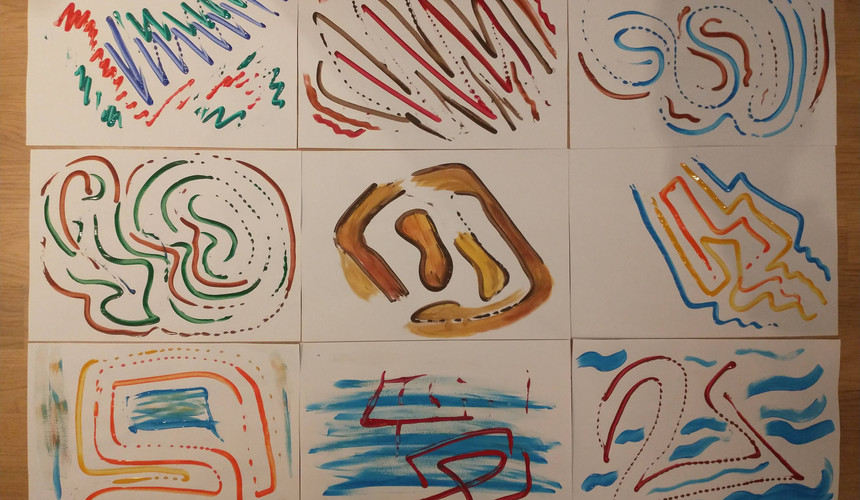


















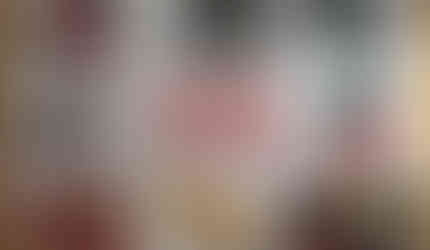





























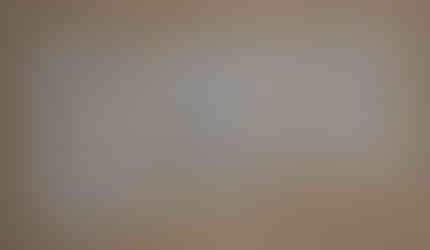














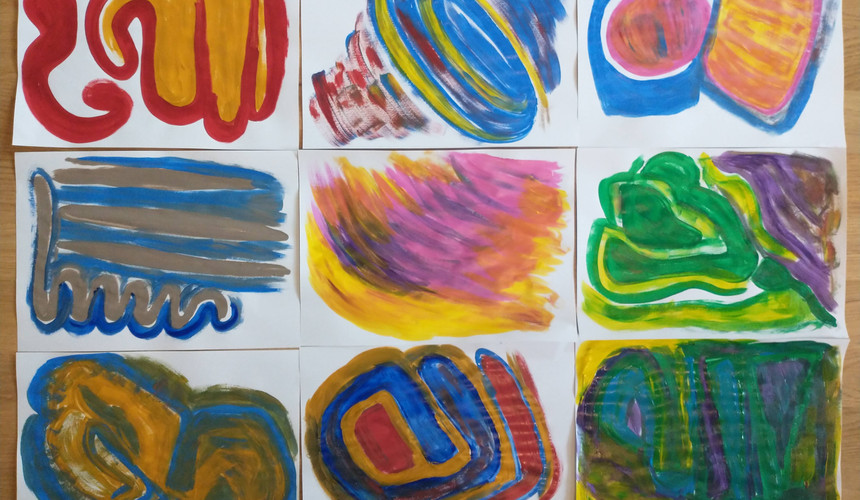






















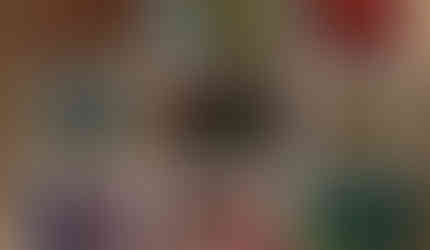














Thank you Polina. Thank you for taking on this practice and gifting the world with what you learn. One day, maybe, our contributions may change the whole practice of art therapy and even psychotherapy. But even if it helps one person change into more happiness and flow, it is wonderful.
Love, Giora